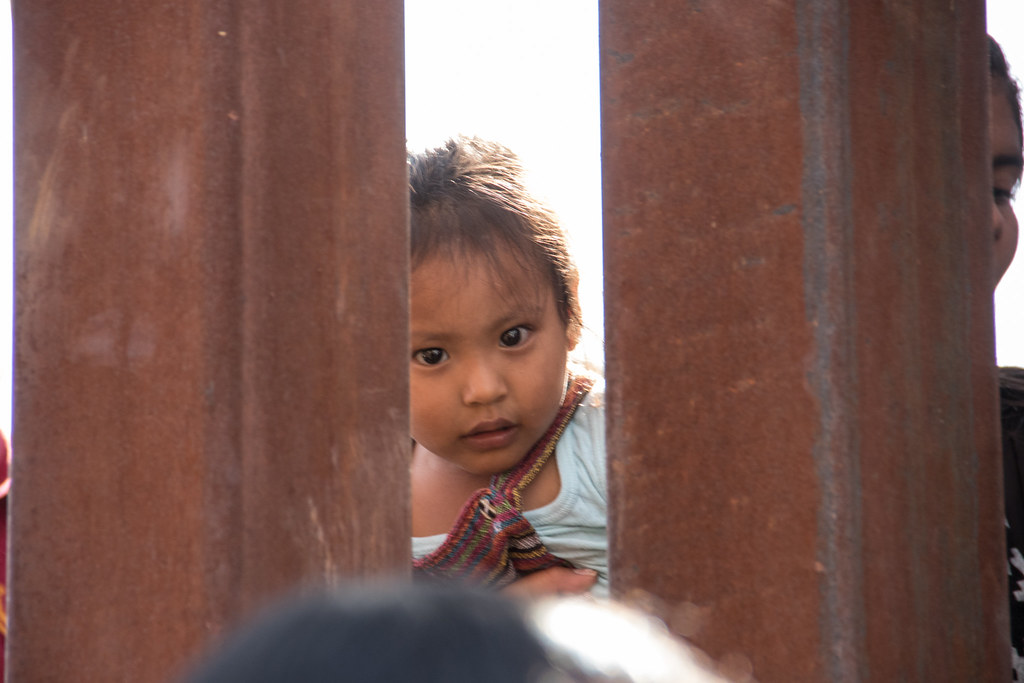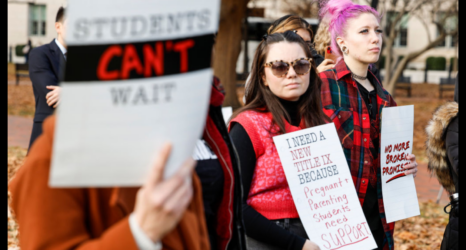In the wake of the pandemic, a restored U.S.-Mexico Border Health Commission endowed with greater funding and a firm binational commitment to strengthened cooperation on border health could be an even greater asset than it has been in the past.

This post originally appeared on the Health Affairs Blog on July 30, 2021.
If ever a spotlight was put on the need for collaboration and a coordinated U.S. and Mexican response to the shared health vulnerabilities along the U.S.-Mexico border, the past year and a half of COVID-19’s scourge of border communities is it.
Since its appearance along the boundary early last year, the pandemic has exacted a heavy toll on the binational border community, with Mexican cities and municipios (similar to counties) bearing the brunt of the crisis. Mexican border cities like Tijuana and Ciudad Juarez saw their health systems staggering to manage the spike in cases during the summer of 2020, generating reverse health tourism as COVID-19 stricken American expats residing in Mexico sought care north of the boundary.
Small U.S. border town hospitals such as those at Yuma and Nogales, Arizona, were also overwhelmed with COVID-19 patients. Arizona’s Yuma and California’s El Centro saw unprecedented demand for health services as cases mounted, Texas’s Hidalgo County, home to Weslaco, Texas, saw a case rate that rivaled behemoth Harris County, home to Houston, in the fall of 2020; South Texas Health System installed an inflatable tent outside their emergency room in Weslaco to serve patients.
The border, as the Centers for Disease Control and Prevention (CDC) aptly highlights on its website, is particularly vulnerable to the spread of infectious diseases. The 2015 mid-decade censuses reported 14.4 million persons residing in the 124 counties and municipios that comprise the 200-kilometer border zone. This strip contains 14 pairs of sister cities and several of the most heavily trafficked ports of entry in the world. Even at the height of the pandemic in the fall and winter of 2020–21 after the border closed to non-essential travel, the border hummed with commercial and personal travel.
Hefty U.S. reliance on agricultural workers along the boundary amplifies the health vulnerabilities of communities. In fiscal year 2020, The United States government issued 213,394 H-2A visas for temporary agricultural workers, up from 204,801 in fiscal year 2019. It is estimated that between 8,000 and 10,000 Mexican workers cross daily to Arizona to work in Yuma County’s $3 billion agricultural industry alone. At the height of the pandemic the flow of agricultural workers was not stymied because they were declared “essential workers.”
In January 2021, Arizona had the highest rate of COVID-19 infections in the country, and Yuma County had some of the worst outbreaks in Arizona; the county’s only hospital ran out of ICU beds. At the ports of entry, mask wearing was inconsistent, and agricultural workers waited in close proximity for many hours so that they could start work. Yuma County officials simply asked employers to follow CDC guidelines in the fields. One major grower, in partnership with the Yuma County Department of Public Health, began vaccinating farmworkers in March 2021.
The border also bears the brunt of unauthorized migration in North America, whose regular flows constitute yet another source of disease transmission. The Trump administration’s highly restrictive immigration rules after 2016 amplified these vulnerabilities. The Zero Tolerance and Remain in Mexico policies, bolstered by invocation of the Public Health Service Act’s Title 42 restrictive emergency authority, effectively pooled thousands of migrants in U.S. detention centers and Mexican cities from Tijuana to Matamoros, exposing them to the most unsanitary conditions and leaving them bereft of health care.
Remarkably, as hospitals in border cities, counties and municipios struggled to manage unprecedented patient caseloads under these difficult circumstances, there was little binational collaboration and cooperation in managing COVID-19 during the worst of the pandemic. Indeed, in what can only be described as an extraordinary failure of foresight, the Trump administration, in its zeal to downsize and curtail government spending, chose to unilaterally shrink and practically eliminate the one institution that the U.S. and Mexico established nearly two decades earlier to address shared health vulnerabilities in the border region: the United States-Mexico Border Health Commission (USMBHC).
The United States-Mexico Border Health Commission: Background, Purpose and Achievements
Authorized by the U.S. Congress in 1994 and finally established by binational executive agreement in 2000, the USMBHC was tasked “to identify and evaluate current and future health problems affecting the population in the United States-Mexico Border Area, and to encourage and facilitate actions to address those problems.”
As the USMBHC reported on its dedicated webpage (before the site was dismantled by the former administration), the commission was meant to “provide international leadership to improve health and quality of life along the U.S.-Mexico border.” Under its terms, the 2000 USMBHC agreement was to be reauthorized for extension every five years. The commission’s U.S. Section, however, was established as a permanent agency and not subject to any condition of renewal.
Each of its national sections, as authorized by the 2000 agreement, established a national secretariat: the U.S. in El Paso, Texas, and Mexico in Tijuana. Financing was a weakness, subject to the availability of funds, and heavily dependent on U.S. contributions. In its early years, the commission functioned on $5 million annually, with Mexico contributing the lesser share. There is no evidence it ever exceeded that level of funding during the Bush or Obama years. All U.S. funding expressly directed at the commission’s secretariats lapsed in 2017.
Even so—and coordinating its binational activities with the binational environmental health activities under the La Paz Agreement (U.S.-Mexico Agreement on Environmental Cooperation in the Border Area), the Pan American Health Organization (PAHO), the U.S. Centers for Disease Control and Prevention (CDC), and with its member border state health agencies—the commission was instrumental in advancing a number of important border health initiatives. Its summary list of accomplishments for the 2000–16 period, published just before its skeletonization and now unavailable online, reported over 30 specific strategic actions, initiatives and activities directed at advancing the health of border communities.
In addition to various programs promoting health awareness and strengthening networks of cross-border health professionals, the USMBHC established a Binational Infectious Disease Initiative to report on infectious disease issues affecting border communities; proposed the establishment of an Early Warning Infectious Disease Surveillance Program; and piloted and established health referral systems in Mexican consulates in the U.S. Its many reports provided detailed status updates on border health conditions and identified areas of special concern.
In sum, the commission used its limited funds to leverage health assets from partner organizations and coordinate and guide directed activities advancing border health. It effectively became a go-to kiosk of information and linkages, an important forum, and a leadership unit for mobilizing needed binational actions addressing acute needs in the border region.
And then, when it was needed most, it was gutted—its U.S. Section vitiated, its secretariat and budget dismantled, and only its Mexican secretariat left to hold the flag. This, in itself, is a pitiful irony, as Mexico had originally balked at joining this binational commission that was perceived in Mexico City as a unilateral U.S. initiative.
What’s Next For The Commission?
At this writing, the fate of the USMBHC remains in limbo. After 2017, its budget curtailed and El Paso secretariat shuttered, its remaining vestigial functions reeled back to the HHS Office of Global Affairs. For all intents and purposes, its former website ceased to exist, and its pre-2017 reports became difficult to access. Coordinated actions on border health were assigned to the HHS liaison officer at the Mexico City embassy. The authorizing agreement remains in force—it is automatically extended every five years unless one party objects.
The Biden administration has yet to signal its intent to restore the commission to its status quo ante, although it seems probable that it will try to breathe new life to its U.S. Section and the Commission as a whole. Neither has Mexico signaled its interest in reviving the commission—although the fact it didn’t walk away from the agreement in 2020 is at least modest evidence of its continued stakeholdership in the agency.
What is certain is that in the wake of the current pandemic, a restored USMBHC endowed with greater funding and a firm binational commitment to strengthened cooperation on border health could be an even greater asset than it has been in the past.
The Politics Of Border Health And The Commission’s Future
Restoring and strengthening the USMBHC will not be easy, and not just because its U.S. Section’s secretariat will need to be reestablished and staffed and endowed with new resources.

The politics of binational cooperation on health must straddle two very different national health care systems and negotiate an operational landscape of economic asymmetry to succeed. It should not prove too difficult to revive and engage binational programs like Healthy Border 2020 (a binational initiative composed of measurable and relevant goals focused on border health) or Binational Border Health Week Programs (an annual health promotion initiative, held throughout October, that unites sister cities in support of borderwide partnerships addressing health challenges), as these low-cost programs operated as partnerships with state health agencies, other federal agencies, and non-profit public health services organizations.
But stepping up binational coordination on infectious disease response requires more authority and more resources. The Border Infectious Disease Surveillance Program—initiated by the CDC and the USMBHC’s U.S. Section in 1999 and followed in 2002 by the formation of a binational Epidemiologic Surveillance and Exchange coordinating group—advances efforts to coordinate information sharing on infectious diseases along the border. These efforts were augmented in 2004 with an Early Warning Infectious Disease Surveillance Program (EWIDS) funding a limited number of infectious disease surveillance sites along the border and supporting binational exchange information concerning epidemiological events. EWIDS received an early test in the H1N1 pandemic of 2009–10, ironically just as its five-year funding lapsed in 2009. It was nevertheless instrumental in enabling important cross-border sharing of clinical data between the two countries during the H1N1 pandemic.
Even so, the lapse of EWIDS funding was a hit to further infectious disease surveillance capacity building in this area even prior to the Trump administration’s curtailment of other USMBHC administrative capacity. With EWIDS’s demise, the disease surveillance program effectively defaulted to the CDC and Mexico’s health secretariat, diminishing the commission’s leadership role in this issue-area—particularly in facilitating U.S. state health services to engage directly across the boundary with their sister state partners in Mexico.
EWIDS pinpoints an important structural problem that USMBHC was meant to help resolve: the gap between Mexico’s more centralized and federal system of health services administration and U.S.’s the highly decentralized system. Despite halting decentralization initiatives over recent decades, Mexico’s health system remains highly centralized, with states looking to Mexico City for resources, authority and policy guidance. The opposite is true of U.S. states, who dominate health policy and are accustomed to taking the initiative in many areas of health services.
The H1N1 crisis saw U.S. border states try to enlist Mexican border states in sharing clinical data, only to find Mexican state health agencies reluctant to do so absent approvals from the federal health secretariat. For its part, Mexico’s federal health officials preferred to deal directly with senior officials at HHS in an emergency rather than engaging with U.S. state agencies.
Even the U.S. CDC was accustomed to directly communicating with Mexico’s Dirección General de Epidemiologia over the heads for border state agencies to get things done. As Arizona’s lead border health officer, Robert Guerrero, put it, commenting on his state’s responses to the H1N1 threat, “We were pushing back [at HHS] at the state level, saying, ‘We need to have the ability to be able to communicate on a real-time basis when things are going on at the local level.’”
In 2010, responding to its experience during the H1N1 event, USMBHC formalized a set of technical guidelines to address this administrative challenge, encouraging both national and state agencies to share information and other resources to strengthen binational epidemiological response. It also advanced cross-boundary laboratory cooperation, recommending that laboratory findings of reportable conditions should be routinely communicated to appropriate health officials where the tested individual resides, with a focus on the role of state health agencies in the transmission of this information.
The new technical guidelines applied to all events of binational health concern, not just infectious diseases; survived the eclipse of EWIDS; and continue to apply. But the USMBHC’s capacity to promote and coordinate inter-state procedures for information diminished markedly during the Trump administration—as Roberto Guerrero diplomatically put it in 2020, “… under Secretary Azar, the priority of the U.S. section changed. That was a huge change in how the commission as a whole operated. Prior to that, any decisions that were made by the Border Health Commission were as much as possible binational decisions. Right now, the commission is kind of at a weak point. It should be the point of contact for the border, but right now it is not.”
Congress To The Rescue?
The Trump administration’s retreat to a paper-thin USMBHC and full-on embrace of a centralized approach to binational border health administration—reinforced by the election of highly nationalistic populist president in Mexico, Andres Manuel López Obrador, and coupled with a largely confrontational U.S. approach to relations with Mexico—stymied the USMBHC’s efforts to bridge the border’s administrative divide on health service provision. It saw most of its formal portfolio fade away, salvaged only by ad hoc state initiatives for binational cooperation with sister states.
In 2020, the U.S. administration’s COVID-19 response, which famously shunted much responsibility for addressing this health crisis to the U.S. states, went forward in the absence of some of the close binational institutional ties forged in preceding years, ensuring weak and ad hoc binational coordination in addressing the crisis at the border.
Whether a vigorous, well-funded and fully fleshed USMBHC would have made a substantial difference in how COVID-19 was handled at the border will never be known; unfortunately, it never had that chance, even after the many lessons learned from its experience with cross-border infectious disease after its formation in 2000. It is reasonable to surmise that the loss of EWIDS in 2009 and most other programs after 2016 has hindered the development of stronger binational protocols and relationships advancing border health in this common epidemiological zone and interface between the two counties.
As border health professionals often observe, what happens at the border doesn’t stay there for long, and certainly not without a vigorous, concerted binational response. The border is a public health front-line for both countries and, in an importance sense, a key site for health security in North America.
This very understanding underlies the recent initiative by Sen. Tom Udall (D-N.M.) to revive and strengthen the USMBHC. That bill, entitled The Border Health Security Act of 2020 and backed by senators from Texas, Arizona and New Mexico, aimed to strengthen the USMBHC and its U.S. Section and restore EWIDS and other programs, with mechanisms to reinforce U.S. commitment to the USMBHC’s functions within HHS.
While the bill died in committee in the second session of the 116th Congress, Rep. Veronica Escobar (D-Texas) in March 2021 introduced a narrower bill specifically aimed at strengthening the commission’s ability to address COVID-19. Specifically, that bill, The Binational Health Strategies Act of 2021, amends the U.S.-Mexico Border Health Commission Act by authorizing an assessment of the COVID response and disease impact along the border, and mandates the production of a binational strategic plan that addresses how the border region may strengthen its pandemic response, mitigate the pandemic’s economic impact on the border, and examine how information-sharing on infectious disease in the border area may be strengthened.
Whether new legislation is needed, or simply an earnest administrative push to reinstate and strengthen and fund the USMBHC’s existing authority and administrative functions, may be a matter for debate. But there is little doubt that the COVID-19 pandemic has put a spotlight on the importance of greater binational cooperation on public health management in the border region and validated anew the farsighted measures that led to the commission’s establishment in 2000. We certainly hope the recent momentum for restoring and strengthening the commission’s important work bears fruit.
Up next:





